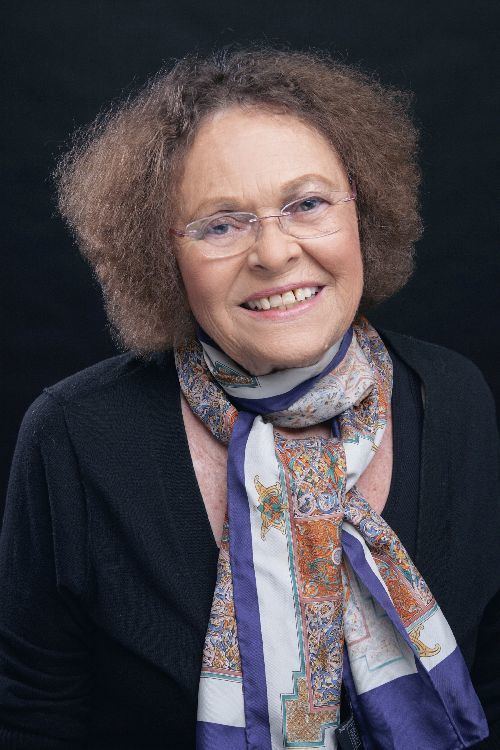Name Marjorie Luesebrink | ||
 | ||
Marjorie Luesebrink: Marjorie Luesebrink
Marjorie Coverley Luesebrink is an author of hypermedia fiction under the pen name M.D. Coverley. She is part of the first generation of electronic literature authors that arose in the 1987–1997 period and is a founding board member of the Electronic Literature Organization.
Contents
- Marjorie Luesebrink Marjorie Luesebrink
- Education and teaching
- Career
- Recent Works and Collections
- Hypermedia novels
- Shorter hypermedia fiction and poetry
- Essays and interviews
- References
Education and teaching
Marjorie Luesebrink is the daughter of Jack Coverley and Alice Wilcox. She received her B.A. in English from the University of California, Berkeley, in 1965, and her M.F.A. in fiction from UC Irvine in 1975. She has taught in the UC Extension and is currently professor in the School of Humanities and Languages at Irvine Valley College.
Career
Luesebrink has published two hypertext novels (or hypernovels), Califia (2000) and Egypt: The Book of Going Forth by Day (2006), a collection of short stories, Fingerprints on Digital Glass (2002), as well as other short fiction collections, poetry, interviews, and articles on electronic literature.
Califia—whose title references the legendary Queen Califia—is a hyperfiction revolving around a treasure hunt by five generations of three Californian families. They are in search of gold buried sometime after the California Gold Rush of 1849, and the overall structure of the hypertext is one of four round-trip journeys taken to find answers. The fiction offers clues to its location through the interweaving of story fragments, historical narratives, legends, and documents like maps, newspaper clippings, deeds, receipts, and journal entries. One scholar has written of Califia that it is designed to lead the reader "to discover the lost cache of California through her wanderings within the story space". Another writer calls it "a metaphysical quest rather than a conventional mystery", noting that the central question of the treasure remains unresolved. It has been termed a classic of hypermedia, and literary critic and hypertext scholar Katherine Hayles has cited it as one of the establishing texts for electronic literature, along with Michael Joyce's work.
Egypt: The Book of Going Forth by Day is a story of death and rebirth set in both contemporary and ancient Egypt. It explores the ways in which narrative can be distributed between both text and other media, including images, music, animations, and the navigational structure and interface. Luesebrink was inspired by the fact that Egyptian hieroglyphics are themselves a complex system of linguistic, symbolic, and visual elements. The book has a single narrator who manifests in multiple ways throughout the narrative as he searches for a missing brother, a plot that echoes aspects of the myth of the death and rebirth of Osiris. Katherine Hayles writes of Egypt: The Book of Going Forth by Day (2006) that its layers "are instrumental in creating a visual/verbal/sonic narrative in which the deep past and the present, modern skepticism and ancient rituals, hieroglyphs and electronic writing merge and blend with one another.
Fingerprints on Digital Glass is a collection of short web pieces published between 1999 and 2002. It includes Afterimage, Default Lives, Tide-Land, Universal Resource Locator, Eclipse Louisiana, Endless Suburbs, Life in the Chocolate
Mountains, and Fibonacci's Daughter. Fibonacci's Daughter is a complexly plotted hypertext centered on protagonist Annabelle Thompson, who runs a business called Bet Your Life out of a California mall. The daughter of gamblers, Thompson sells insurance policies that allow people to bet on their own future prospects. Bet Your Life is both successful and controversial, leading Thompson to be accused of witchcraft (among other things), especially after two teenage clients disappear and are later found dead. The narrative of Fibonacci's Daughter is told through a number of different voices, including excerpts from news stories. Luesebrink originally created Fibonacci's Daughter with the trAce Archive of online writing at Nottingham Trent University in the U.K. Another author of early hypertexts, Jane Yellowlees Douglas, has argued that Fibonacci's Daughter owes a debt to Nathanial Hawthorne's story "Rappaccini's Daughter" in that both are meditations on all the ways that attempting to make the world more orderly can go wrong.
Luesebrink's 1998 essay "The Moment in Hypertext: A Brief Lexicon of Time" has been cited as providing "an important opening for the discussion of temporality in hypertext". Her work has been included in several collections of interactive literature, including The Blue Moon Review (2001) and Riding the Meridian (vols. 2.1 and 2.2, 2000).
Marjorie Luesebrink is a founding board member and past president of the Electronic Literature Organization.
